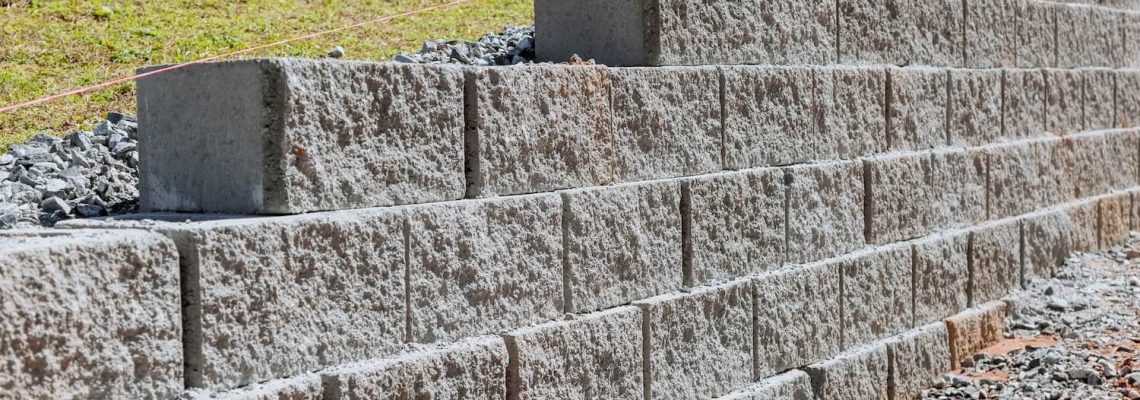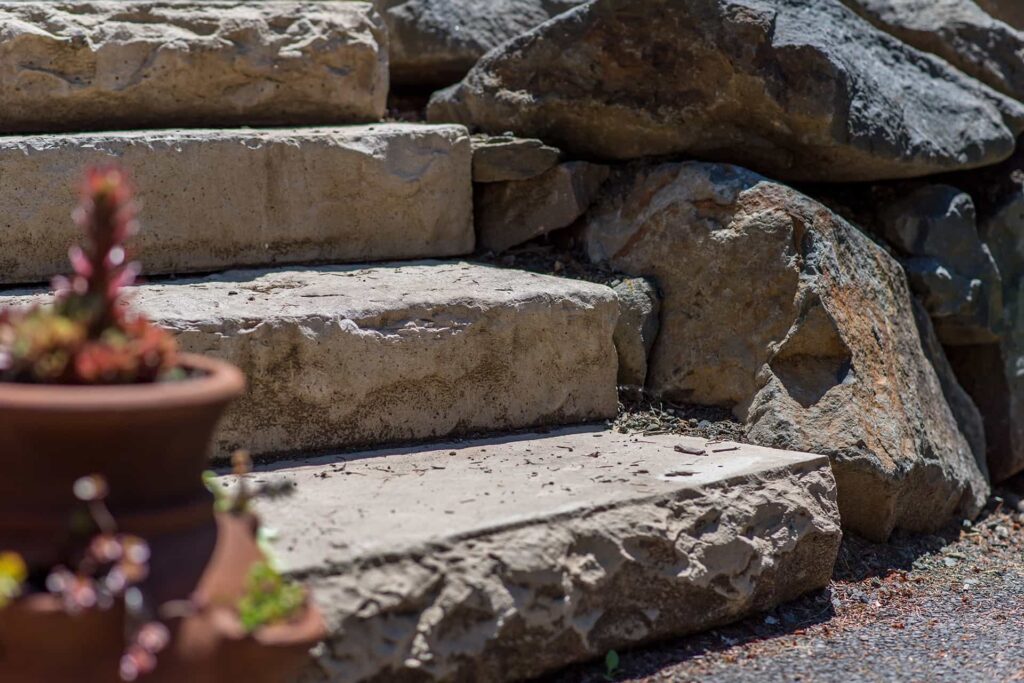Retaining walls are often seen as one of the most reliable features in landscaping, offering both aesthetic value and functional benefits. Whether they’re used to level sloped areas, control erosion, or create beautiful outdoor spaces, retaining walls play a crucial role in your property’s stability. However, what many homeowners fail to realize is that poor drainage is one of the biggest threats to the longevity of these structures.
Without proper water management, even the strongest retaining walls can succumb to the pressures of water accumulation. This article will delve into the critical relationship between drainage and retaining wall stability, detailing how poor drainage can cause significant damage and offering practical steps to ensure your wall stands strong and safe for years to come.
The Relationship Between Water and Retaining Walls
A retaining wall is built to retain soil, particularly on sloped properties, to prevent landslides, erosion, or the collapse of soil. These walls can be made from various materials like concrete, stone, brick, or timber, but regardless of the material, they all face one common challenge: water. Water has a significant impact on the pressure behind a retaining wall, and without the proper measures in place, this pressure can become dangerous.
Water tends to build up in the soil behind retaining walls for several reasons. The most common causes are poor drainage systems, excessive rain, incorrect grading, or a lack of weep holes. When this water accumulates, it leads to hydrostatic pressure that can push against the wall. The resulting force can crack, bulge, or displace the structure over time, potentially leading to total wall failure.
Understanding how water interacts with a retaining wall is key to understanding how poor drainage can ruin the structure and how to prevent it. The importance of managing water behind a wall cannot be overstated; the key to long-lasting, effective retaining walls lies in proper drainage.
The Impact of Poor Drainage on Retaining Walls
1. Hydrostatic Pressure
Hydrostatic pressure is the force exerted by a liquid (in this case, water) as it pushes against a surface. In the context of a retaining wall, when water builds up behind the structure, it exerts pressure against the wall itself. If the water cannot drain away, this pressure builds up over time and can cause the wall to bow or lean outward. The longer the water remains behind the wall, the more intense the pressure becomes, eventually leading to wall failure.
Hydrostatic pressure is especially concerning for concrete or masonry walls, which are solid and resistant to bending but can crack under the weight of prolonged pressure. Wooden or timber retaining walls are also susceptible to bowing or leaning due to hydrostatic pressure, which can weaken the overall structure.
2. Soil Erosion and Loss of Support
Water accumulation behind the retaining wall can lead to soil erosion. As the water seeps into the soil, it loosens the earth, removing the support that the wall relies on to stay intact. Over time, as the soil erodes, the wall can begin to lean, shift, or fail completely. In the worst-case scenario, the entire wall may collapse, resulting in the displacement of large amounts of soil.
Erosion is exacerbated by improperly maintained or absent drainage systems. Water will naturally flow downhill, and without adequate drainage, it will continually pool behind the wall, steadily eroding the soil behind it. This erosion weakens the structural integrity of the wall and makes it increasingly vulnerable to failure.
3. Cracking and Wall Structural Damage
Water’s ability to infiltrate and seep into retaining walls causes long-term damage. Excessive moisture can weaken the materials used to build the wall, leading to cracking, shifting, and weakening of the structure. Concrete retaining walls are particularly susceptible to cracking due to constant exposure to water. This can lead to fissures and gaps that compromise the wall’s ability to retain soil effectively.
Water that enters these cracks can exacerbate the issue by freezing and thawing during cold weather. This freeze-thaw cycle can cause the cracks to expand, further weakening the structure. For retaining walls made of wood, water can cause rot, warping, and decay over time, ultimately rendering the structure unusable.
4. Frost Heaving
In colder climates, the risk of frost heaving becomes particularly significant. When water accumulates behind a retaining wall and freezes, it expands. This expansion creates upward pressure on the retaining wall, causing it to shift or tilt. The freeze-thaw cycle continues to exacerbate the problem, resulting in repeated movement of the wall. If left unchecked, frost heaving can significantly damage the wall, leading to long-term structural problems.
Frost heaving not only affects the retaining wall but also the surrounding soil. As the water freezes and thaws, the soil around the wall can shift unpredictably, causing further instability.
Prevention Strategies: How to Avoid Drainage Issues
While poor drainage can certainly damage a retaining wall, the good news is that it is entirely preventable. By implementing the right drainage strategies during the construction of a retaining wall (and maintaining them over time), homeowners can protect their investment and ensure the longevity of the wall.
1. Installing a Proper Drainage System
A proper drainage system is arguably the most critical aspect of maintaining a stable and long-lasting retaining wall. The goal of a drainage system is to allow water to escape from behind the wall, reducing the buildup of hydrostatic pressure. There are several ways to accomplish this, including:
- French Drains: A French drain is one of the most effective methods of water management behind a retaining wall. This system consists of a perforated pipe placed in a trench that is filled with gravel or crushed stone. The pipe collects water and directs it away from the wall, reducing the pressure. The gravel helps filter the water, preventing debris from clogging the drainage system.
- Weep Holes: Weep holes are small, strategically placed openings in the wall that allow water to escape. These holes are particularly helpful in preventing water buildup and reducing hydrostatic pressure. It is crucial to ensure that weep holes remain unobstructed by dirt or vegetation, as blockages can worsen drainage issues and cause water to accumulate behind the wall.
2. Proper Grading and Landscaping
The grading of the ground around a retaining wall plays a pivotal role in water flow. When the area around the wall slopes toward the wall, water will naturally flow into it. However, when the grading slopes away from the wall, water will flow away from the structure, preventing pooling behind the wall.
When installing a retaining wall, ensure that the surrounding landscape is properly graded to direct water away from the wall. Grading should be done carefully to achieve a gentle slope that encourages water runoff, reducing the risk of water accumulation.
3. Using Geotextile Fabric
In addition to traditional drainage systems, it’s beneficial to use geotextile fabric behind the retaining wall. This permeable fabric serves as a filter, allowing water to pass through while preventing fine soil particles from entering the drainage system. The fabric helps to keep the drainage pipes clear of sediment, which can block water flow and lead to water buildup.
Geotextile fabric also helps prevent soil erosion by keeping the soil in place, ensuring that the wall has adequate support. It’s an essential tool in any drainage solution behind a retaining wall, especially when the surrounding soil contains a lot of fine particles.
4. Regular Maintenance of the Wall Drainage System
A retaining wall is only as good as the drainage system behind it, and regular maintenance is essential to keeping that system in working order. Over time, debris such as leaves, dirt, and twigs can clog drainage pipes, weep holes, and French drains. If these drainage systems become blocked, water will have nowhere to go, increasing the likelihood of hydrostatic pressure and soil erosion.
Performing periodic checks of the drainage system and cleaning the pipes, weep holes, and gravel fill will help keep the water flowing freely and reduce the risks associated with poor drainage. A proactive maintenance approach will extend the lifespan of both the drainage system and the retaining wall.
5. Proper Material Selection for the Wall
The materials used to build the retaining wall can have a significant impact on how water affects the structure. Concrete walls, for instance, may require special considerations, such as ensuring the wall has an integrated drainage system. For timber walls, the wood should be treated to withstand prolonged exposure to moisture. Stone and brick retaining walls also need proper drainage to ensure water doesn’t seep into the wall’s joints.
When building a retaining wall, always consult with professionals who can guide you in selecting the best materials and drainage solutions for your specific climate and landscape.
6. Managing Surface Water Runoff
Surface water runoff from your roof or driveway can exacerbate drainage issues around your retaining wall. Ensure that your gutters and downspouts are working effectively to direct water away from the base of the wall. If needed, install additional drains or channels to help manage surface water runoff, preventing it from pooling near the wall.
Recognizing the Signs of Poor Drainage Problems
Even with the best preventative measures in place, drainage issues can still arise over time. It’s important to be vigilant and recognize the signs of drainage problems early before they cause irreversible damage to the retaining wall. Some common warning signs include:
- Cracking or Bulging: Visible cracks or bulges in the wall are clear indications that hydrostatic pressure is building behind it. If left unchecked, this could eventually lead to wall failure.
- Shifting or Leaning: If the wall begins to lean or shift, it could be due to the erosion of the soil behind it. This is a common result of poor drainage.
- Pooling Water: If you notice water pooling behind or near the base of the wall, it’s a sign that the drainage system may be clogged or ineffective.
- Sagging or Leaning Vegetation: If plants or grass near the retaining wall appear to be leaning or sagging, it may indicate that water is not draining properly.
Retaining Wall Conclusion
A retaining wall is an investment in your landscape, providing both functional support and aesthetic value to your property. However, without proper drainage, even the most durable retaining walls are at risk of failing. The relationship between water and retaining walls is complex, and understanding how water impacts these structures is key to ensuring their longevity.
By installing a proper drainage system, regularly maintaining it, and selecting the right materials for your wall, you can protect your investment and enjoy a stable, beautiful outdoor space. Preventing water from ruining your retaining wall requires foresight, planning, and diligent maintenance. Taking these steps today will help ensure that your retaining wall serves its purpose for many years to come, protecting your landscape and your property’s value.


